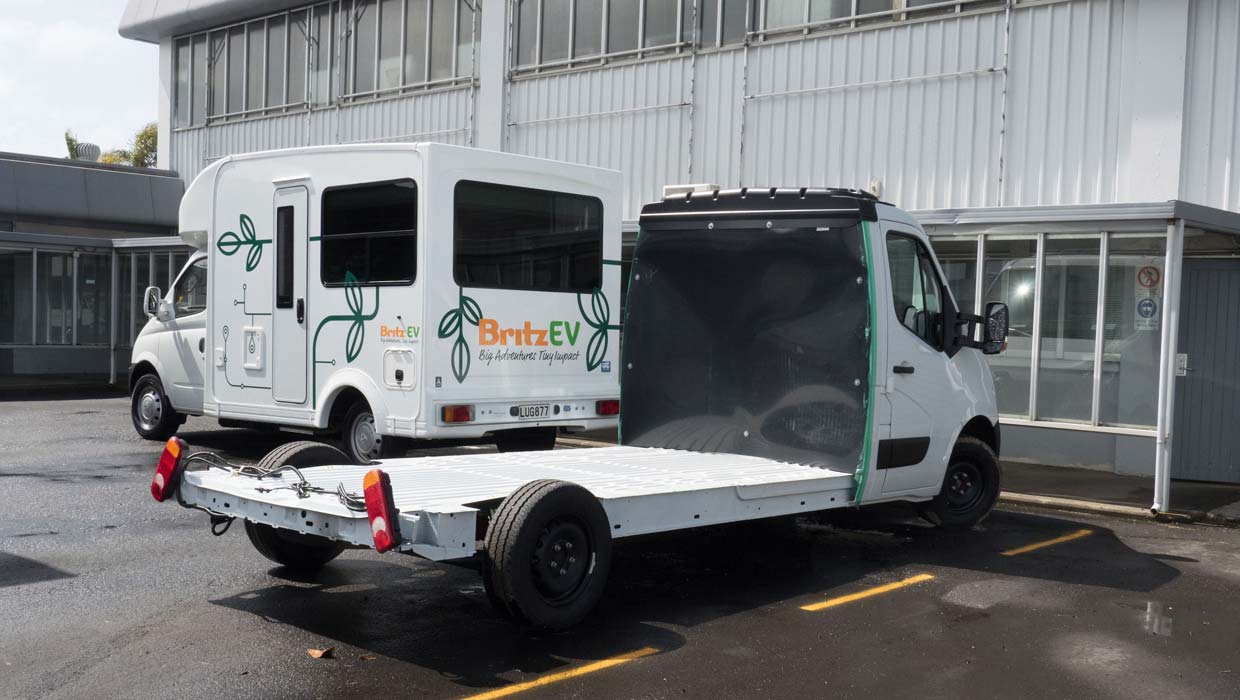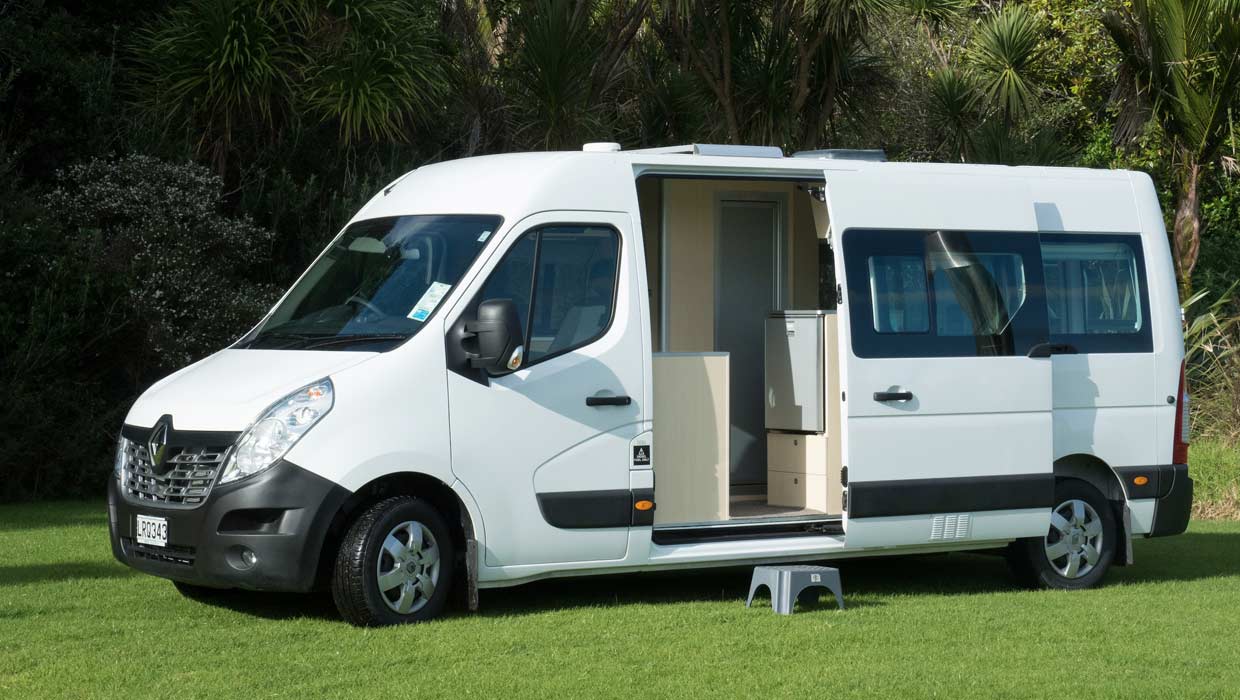Everything you need to know about motorhome chassis
Author: Your RV Good Guide Date Posted: 14 January 2023

If you’re thinking about buying a campervan or motorhome, features like layout, size, and storage options are all important. But along with these, the type of chassis the motorhome is built on is likely to be an important factor. The driving comfort, safety, and on-road performance are all determined by the chassis, so it’s worth doing some research on the options available in New Zealand.
In this helpful guide to everything you need to know about motorhome chassis’, we’ll help answer some commonly asked questions, including:
- What is a chassis on an RV?
- Who makes motorhome chassis?
- What is the difference between motorhome types and their chassis?
- Campervans
- Class A
- Engines
What is a chassis on an RV?
You can think of your motorhome as having two main parts.
- The chassis is essentially the foundation vehicle that your motorhome is built upon. It includes the cab, engine, and all underpinnings of the motorhome.
- The ‘home’ is the living area built onto the chassis.
Motorhomes in New Zealand are built on a variety of cab chassis. These are usually vehicles built for the light commercial trucking world.
Who makes motorhome chassis?
In New Zealand, many of the cab chassis used in motorhome construction are built by European manufacturers. These include:
- Fiat - Ducato
- Mercedes-Benz - Sprinter
- Volkswagen- Crafter
- Iveco - Daily
- Renault - Master
- Peugeot - Boxer
The main difference when it comes to cab chassis between European and New Zealand motorhome manufacturers is that those built in New Zealand and Australia often have a higher gross vehicle mass (GVM) and heavier weight.
There are a few Japanese chassis on the road also, including Isuzu NPR for larger motorhomes and the Toyota Hi-ace for the smaller models. And although not particularly common in New Zealand, occasionally a Ford (USA) Transit model makes an appearance on US-built motorhomes. The Chinese-built LDV Maxus is sometimes used by motorhome manufacturers as well.
What is the difference between motorhome types and their chassis?
Different types of motorhomes have different chassis types.
Campervans
The term ‘campervan’ and ‘motorhome’ are sometimes used interchangeably. However, a campervan is defined as a van conversion. These are often built on a Mercedes Benz, Renault, VW, or Toyota Hiace.
A-class
Class-A motorhomes usually look a bit like a coach with fewer windows. For A-class motorhomes, the light commercial manufacturers supply a chassis without the cab. From Europe, both the Fiat Ducatos and Mercedes-Benz Sprinters are used for this purpose. In the case of US-built A-class motorhomes, sometimes a purpose-built motorhome chassis is used. The advantage here is that it gives a more comfortable ride.
Class B and C
C-class
C-class motorhomes means a cab chassis with a motorhome body that includes a bed over the driver’s cab. Sometimes known as a ‘Luton peak’, it’s not quite as streamlined as other variations. Currently, Mercedes-Benz Sprinter, Fiat Ducato, Iveco Daily and Ford Transits are the most popular choice for base vehicles. There are also a few Isuzu, Renault, and Peugeot models around as well. Most are rear-wheel drive but the most popular of all, the Fiat Ducato, as well as the Ford Transit and Peugeot, are front-wheel drive.
B-class
.jpg)
B-class motorhomes are very similar to C-class, but without the bed over the cab. The result is a more streamlined-looking motorhome.
With B- and C-class motorhomes, the vehicle manufacturer supplies a cab chassis, and the motorhome manufacturer builds a body on the back.
Quite a few vehicle manufacturers, in particular Fiat (which has the lion’s share of the European market) and Mercedes-Benz, will supply a vehicle that is purpose-built for the motorhome market. It will come with the top and the rear of the cab already cut out (saving the motorhome manufacturer work) and items such as swivelling seats already fitted.
In the case of Fiat, sometimes only the cab will be delivered, and the chassis part supplied by AL-KO. One of the advantages of using an AL-KO chassis, which literally bolts on, is that it can result in a higher gross vehicle mass (GVM) rating.
What chassis does my motorhome have?
The easiest way to identify the chassis of your motorhome is to look for the decal on the front grill or steering wheel. If there is no decal, you’ll find the chassis type with the VIN number.
Chassis ID tends to be incorporated by model types. For example, in a Mercedes 519CDI (6-berth platform), 519 is a chassis type for a dual wheel 5T capacity chassis.
All about motorhome chassis engines and gearboxes
Engines
The engine that drives your motorhome obviously plays a big part in your overall travel experience. That means it’s worth knowing a little more about what’s available and what you need to consider when it comes to different types of motorhome engines.
Most New Zealand motorhomes use turbodiesel engines. European-built cab chassis engines are usually sized between 2.3L and 3.0L with power ratings between 96KW and 140kW. Cab chassis from the US, you may not be surprised to learn, often have much larger engines (think 6.8L and counting) and are usually turbodiesel but can be petrol-powered too. One of the reasons for the engine differences between European and US-built vehicles is that the Europeans have much tougher emission requirements.
Gearboxes
For the most part, modern motorhome gearboxes are usually automatic. However, they come in different types, usually either an automated manual transmission (AMT) or a torque converter automatic. Generally speaking, the torque converter automatic gives a smoother performance than AMT gearboxes which are often hesitant in the lower ranges. Some motorhomes come with a manual gearbox, but they are in the minority these days.
How are motorhomes constructed?
Once the chassis is delivered to the motorhome manufacturer, it’s time to start building the final product.
For anyone considering buying a motorhome and travelling around New Zealand, there is plenty of choice from imported models to those built locally, such as the KEA range built by Action Manufacturing.
Action mainly uses either Mercedes-Benz Sprinter or Renault Master chassis. They arrive at the factory with a bare chassis and most of the cab. The back wall is usually missing.
In a nutshell, motorhomes are built using an ‘inside out’ technique, starting with the floor. Next, the cabinetry is installed before the walls are added. The last component to be added is the roof.
Action manufactures its own lightweight strong composite panels, branded as Omnipanel. This panelling is built using a combination of a high UV-resistant, easy-to-repair fibreglass outer skin, and a thinner durable fibreglass inner skin, over a closed cell foam. This foam has very high thermal characteristics called Dow Styrofoam.
You can take a tour of KEA’s New Zealand factory to get a behind-the-scenes peek into the production process.
.jpg)
How to maintain your motorhome chassis
Over time, some chassis can develop rust or damage. Rust can be more problematic for those who live, or regularly travel, near coastal regions.
It is important to inspect your chassis for rust regularly and take preventative measures. If you do spend a lot of time near the sea, it may be worth having your chassis underbody sprayed with cavity wax or a rust prevention spray.
A few tips to help keep your chassis in tip-top condition include:
- Rinse the undercarriage, wheel arches, and engine bay when needed to remove dirt, oil, tar, salt and other debris.
- Vehicles that are older (pre-2000) will have pivot points that can be lubricated with a quality automotive-grade lubricant, but this will typically be topped up when your vehicle is serviced.
- The tyres should be checked before starting out on any trip. Check them regularly and keep them inflated to recommended pressures.
- Rotate the tyres at least once every 10,000 kilometres. Note: Some procedures require the use of special tools for safe and correct maintenance.
- Check your oil and other engine fluids regularly.
- Book in a motorhome service with RV Super Centre at least once or twice a year.
For more helpful tips, check out our handy guide on RV Exterior Care & Maintenance.
Ready to buy your own motorhome?
There’s not always a choice with motorhome cab chassis, particularly if a certain layout is your preferred option. That said, most of the commonly used European cab chassis are easy to drive and come with most of the comforts and features of a conventional sedan vehicle.
Whatever chassis the motorhome is built on, the first step is always to take a good test drive. Get a feel for how the motorhome handles on the road and how comfortable you feel driving. RV Super Centre is part of thl who own and operate the popular maui, Britz and Mighty motorhome rentals across New Zealand. This means RV Super Centre can offer a great ‘try before you buy’ option! Rent from thl and if you buy a motorhome within three months of your hire, we'll give you your rental cost back (subject to T&Cs, up to $1500)!
RV Super Centre has a wide range of campervans and motorhomes including new and refurbished ex-rental models. Our team of experts can talk you through the pros and cons of each model depending on your individual needs. Take the first step and check out our great range online or at your nearest RV Super Centre.







